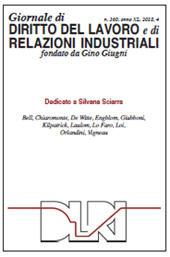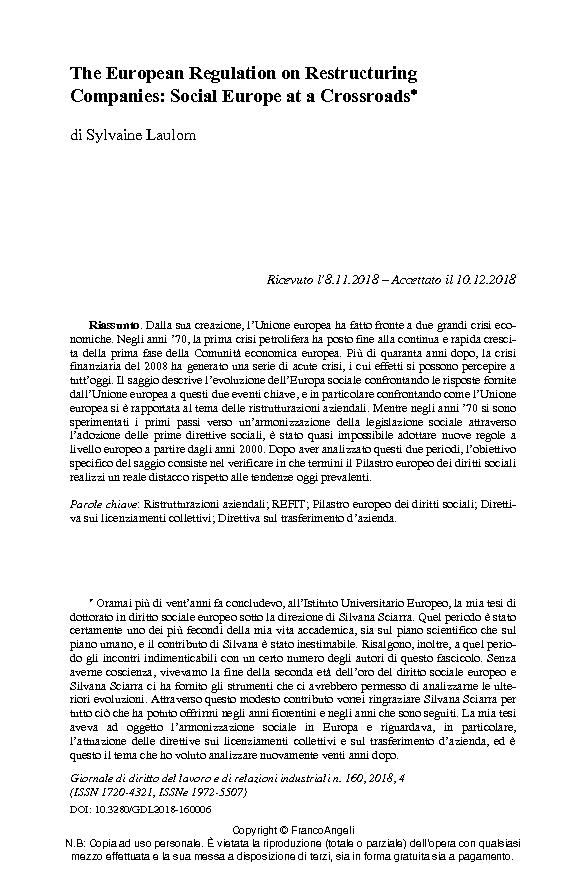The European Regulation on Restructuring Companies : Social Europe at a Crossroads
811-841 p.
Since the European Union came into existence, it has faced two major economic crises. In the 1970s, the first oil crisis put an end to the continuous and fastest economic growth of the first period of the European Economic Communities. More than 40 years later, the 2008 financial crisis generated a series of acute crises, the effects of which can be felt to this day. Comparing the European Union's social response to these two key periods, and more specifically comparing how the European Union faced the issue of company restructuring, highlights the evolution of Social Europe. While the 1970s saw the first steps towards harmonising social legislation, with the adoption of the first social directives, it has been almost impossible to adopt new rules on the European level since the 2000s. After analysing these two periods, the specific objective of this paper is to analyse whether the European Pillar of Social Rights marks a real departure from current prevailing trends. [Publisher's text].
Dalla sua creazione, l'Unione europea ha fatto fronte a due grandi crisi economiche. Negli anni '70, la prima crisi petrolifera ha posto fine alla continua e rapida crescita della prima fase della Comunità economica europea. Più di quaranta anni dopo, la crisi finanziaria del 2008 ha generato una serie di acute crisi, i cui effetti si possono percepire a tutt'oggi. Il saggio descrive l'evoluzione dell'Europa sociale confrontando le risposte fornite dall'Unione europea a questi due eventi chiave, e in particolare confrontando come l'Unione europea si è rapportata al tema delle ristrutturazioni aziendali. Mentre negli anni '70 si sono sperimentati i primi passi verso un'armonizzazione della legislazione sociale attraverso l'adozione delle prime direttive sociali, è stato quasi impossibile adottare nuove regole a livello europeo a partire dagli anni 2000.
Dopo aver analizzato questi due periodi, l'obiettivo specifico del saggio consiste nel verificare in che termini il Pilastro europeo dei diritti sociali realizzi un reale distacco rispetto alle tendenze oggi prevalenti. [Testo dell'editore].
-
Artículos del mismo número (disponibles individualmente)
-
Información
Código DOI: 10.3280/GDL2018-160006
ISSN: 1972-5507
MATERIAS
KEYWORDS
- Ristrutturazioni aziendali
- REFIT
- Pilastro europeo dei diritti sociali
- Direttiva sui licenziamenti collettivi
- Direttiva sul trasferimento d'azienda



